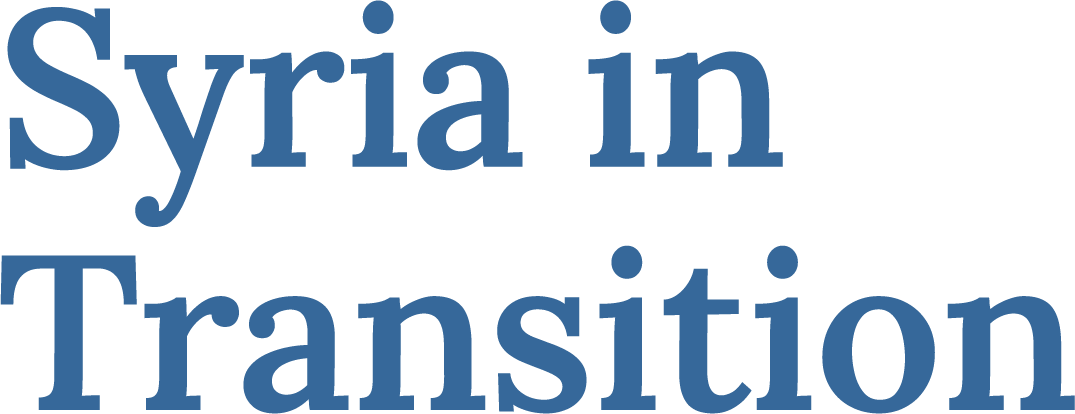In: Issue 4, September 2023
Fraying at the edges
Suwayda and Deir Ezzor rise up
Amid a seemingly frozen conflict, two revolts shook Syria in the past month. The first was in Suwayda, the Druze-majority province in the south, and was directed against the Assad regime. The second, involving Arab tribes, was in Deir Ezzor province, and targeted the Syrian Democratic Forces (SDF). The former was entirely peaceful, the latter violent. Though only 400kms apart, the two revolts appear to have little in common, each happening within its own eco-system of local, regional, and international drivers, actors, and dynamics. Both, however, are manifestations of the slow break up of Syria.
The Druze of Suwayda, turning their backs on the failing Assadist state, seek a form of de facto autonomy within it under international protection. The Arabs of Deir Ezzor want much the same: autonomy within the Autonomous Administration of North and East Syria (AANES) under a US security umbrella. Where maps once shaded Suwayda province a solid red for ‘regime control’, now they must show it as ‘disputed.’ It could be the same for swathes of Deir Ezzor if the revolting tribesmen manage to negotiate favourable terms. The breakup of territories into autonomous sub-units is not new, at least to the opposition, HTS seceding from the Syrian Interim Government (SIG) to form its own administration in Idlib in 2017. The state decay, social dislocation, growing localism, and the war economy that first eroded the opposition are now doing the same in the other two ‘areas of control.’ The likely result of the Suwayda and Deir Ezzor revolts will be six such areas instead of four.
Bottom-up federalisation
In recent years, the prospect for a sudden or overall change in the balance of power has always been slim. The Syrian conflict nevertheless continued to evolve within the different areas of control in terms of the power relations between competing foreign and local interest groups. This paradox of national conflict stalemate and local conflict evolution unfolded in relative calm after the Turkish-Russian ceasefire agreement of March 2020, which ended large-scale fighting and froze the frontlines. The humanitarian hardship caused by the conflict has in large part resulted from territorial division, which aggravated an already profound socioeconomic crisis by fragmenting resources and trade flows and making permanent the displacement of people. Existing divisions are further accentuated when people must turn to the limited services and governance provided by a patchwork of state/semi-state/non-state armed groups, reinforcing the control of such forces but also breeding local resentment that at times boils over. This dynamic will likely lead to further fragmentation until the de facto division of Syria is complete.
The diffusion of power away from a controlling centre is sometimes cited as the work of a foreign conspiracy. Foreign actors indeed might stoke and inflame; but what the revolts in Suwayda and Deir Ezzor show is that local popular opinion favours a ‘go-it-alone’ approach. For the few remaining Syrian communities still possessing leaderships and the ability to mobilise, staking a claim to a chunk of territory, seeking external guarantees for that claim, and awaiting a political solution for the meta conflict is the only logical course of action. The Druze and the Arab tribes entered the political scene not only because centralised governance in their regions was failing, but because the frozen national conflict encouraged sub-national loyalties and aspirations. Following the regime’s military takeover of the south and the defeat of the Islamic State, the lack of immediate external threats allowed both the Druze and the Arab tribes to take stock and – perhaps for the first time in the conflict – focus on bread-and-butter issues that directly affect their community’s prosperity and well-being. With dwindling resources comes heightened competition over what remains. The Arab tribes want a fair share of the oil in eastern Syria; and Suwayda wants to be the economic gateway to Syria’s south. These are legitimate and reasonable aspirations for two communities facing a collective decline in fortunes.
No one wants permanent partition. Maintaining Syria’s unity and territorial integrity is one of the few issues on which all conflict stakeholders agree. The present trajectory suggests something more nuanced: a bottom-up federalisation of Syria. Absent a comprehensive political solution that re-unifies Syria under democratic governance, the regions will inevitably have to work out a modus vivendi based in large measure on the commitment of external patrons to guarantee terms. This trend is an opportunity – separate from any arising from a conflict management and resolution perspective – that allows for engagement, dialogue, and negotiation between the regions on aid, security, and economic affairs. Transparent discussions and deals on crossline relations would allow greater regional and international scrutiny and buy-in, and would give local residents key information on decisions affecting their everyday lives. Crossline engagement will require flexibility and pragmatism. A synthesis of the collective bottom lines of all the regional and group interests could be the strategic entry-point to a resolution of the Syrian conflict; and this could be achieved under the banner of the UN’s call for a “safe, calm, and neutral environment” – an environment that has yet to be defined.
